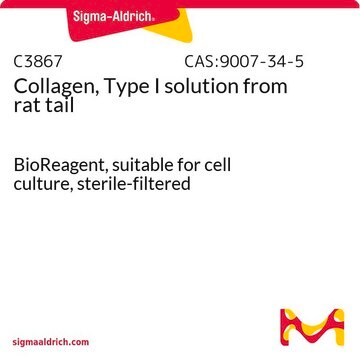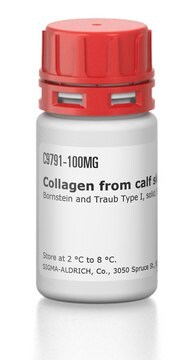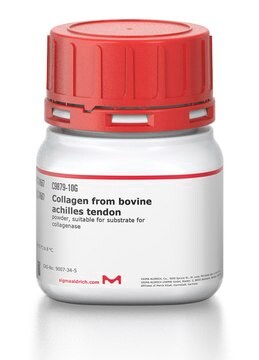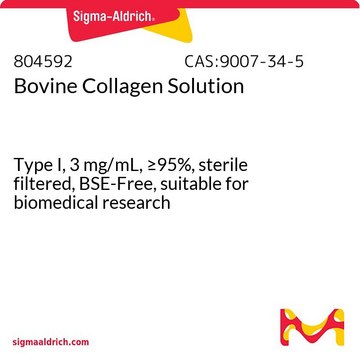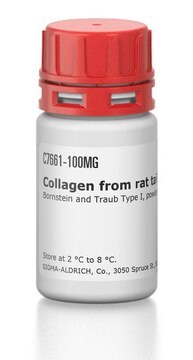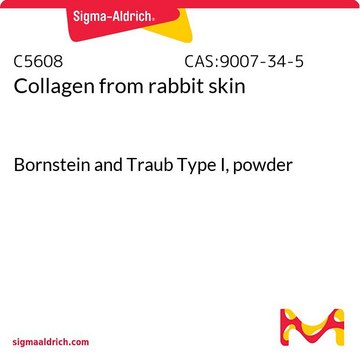C2124
Bovine Collagen Type I
from bovine skin, liquid, 6 mg/mL, suitable for cell culture, used for 3D gel formation
About This Item
Productos recomendados
Nombre del producto
Collagen solution from bovine skin, Type I, 6 mg/mL, sterile-filtered, BioReagent, and for 3D matrix formation., suitable for cell culture
biological source
bovine skin
Quality Level
sterility
sterile-filtered
product line
BioReagent
form
liquid
packaging
pkg of 50 mL
concentration
6 mg/mL
technique(s)
cell culture | mammalian: suitable using and for 3D matrix formation.
surface coverage
6‑10 μg/cm2
binding specificity
Peptide Source: Collagen
Peptide Source: Elastin
Peptide Source: Fibronectin
foreign activity
endotoxin ≤1.0 μmole/min-mg protein
shipped in
wet ice
storage temp.
2-8°C
¿Está buscando productos similares? Visita Guía de comparación de productos
General description
Application
Biochem/physiol Actions
Components
Preparation Note
Other Notes
Storage Class
10 - Combustible liquids
wgk_germany
nwg
flash_point_f
Not applicable
flash_point_c
Not applicable
Elija entre una de las versiones más recientes:
¿Ya tiene este producto?
Encuentre la documentación para los productos que ha comprado recientemente en la Biblioteca de documentos.
Los clientes también vieron
Artículos
Extracellular matrix proteins such as laminin, collagen, and fibronectin can be used as cell attachment substrates in cell culture.
Nuestro equipo de científicos tiene experiencia en todas las áreas de investigación: Ciencias de la vida, Ciencia de los materiales, Síntesis química, Cromatografía, Analítica y muchas otras.
Póngase en contacto con el Servicio técnico
